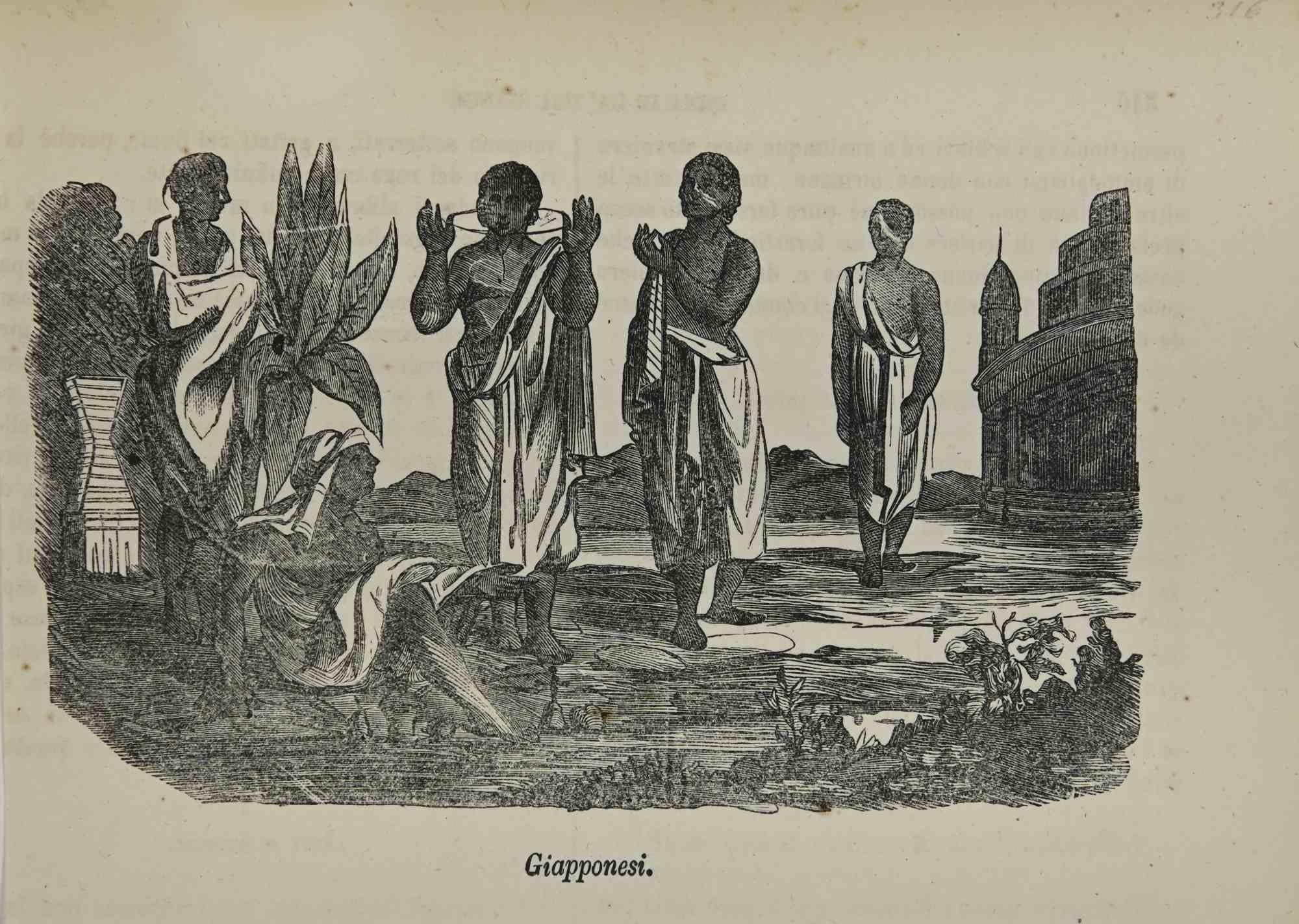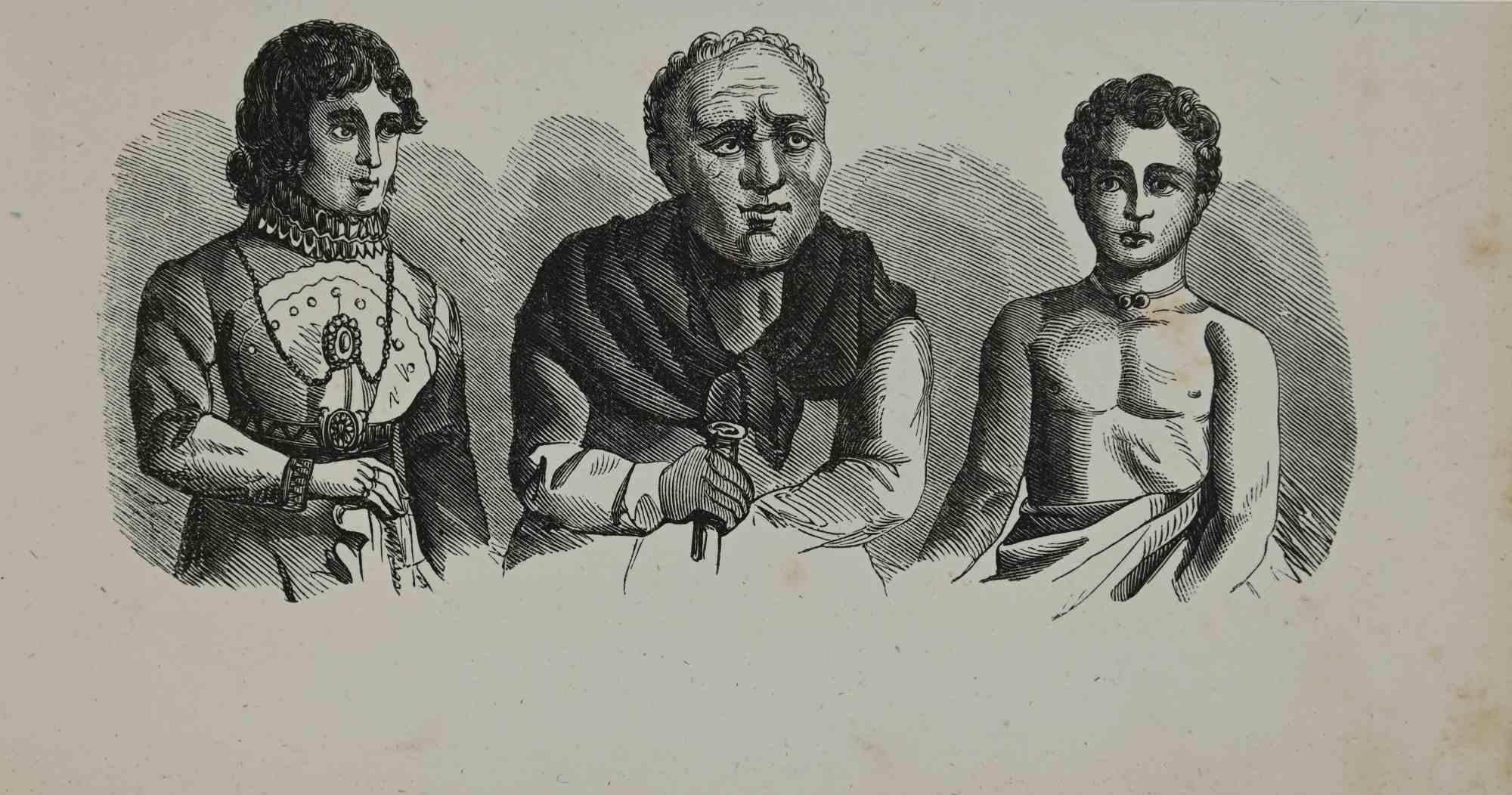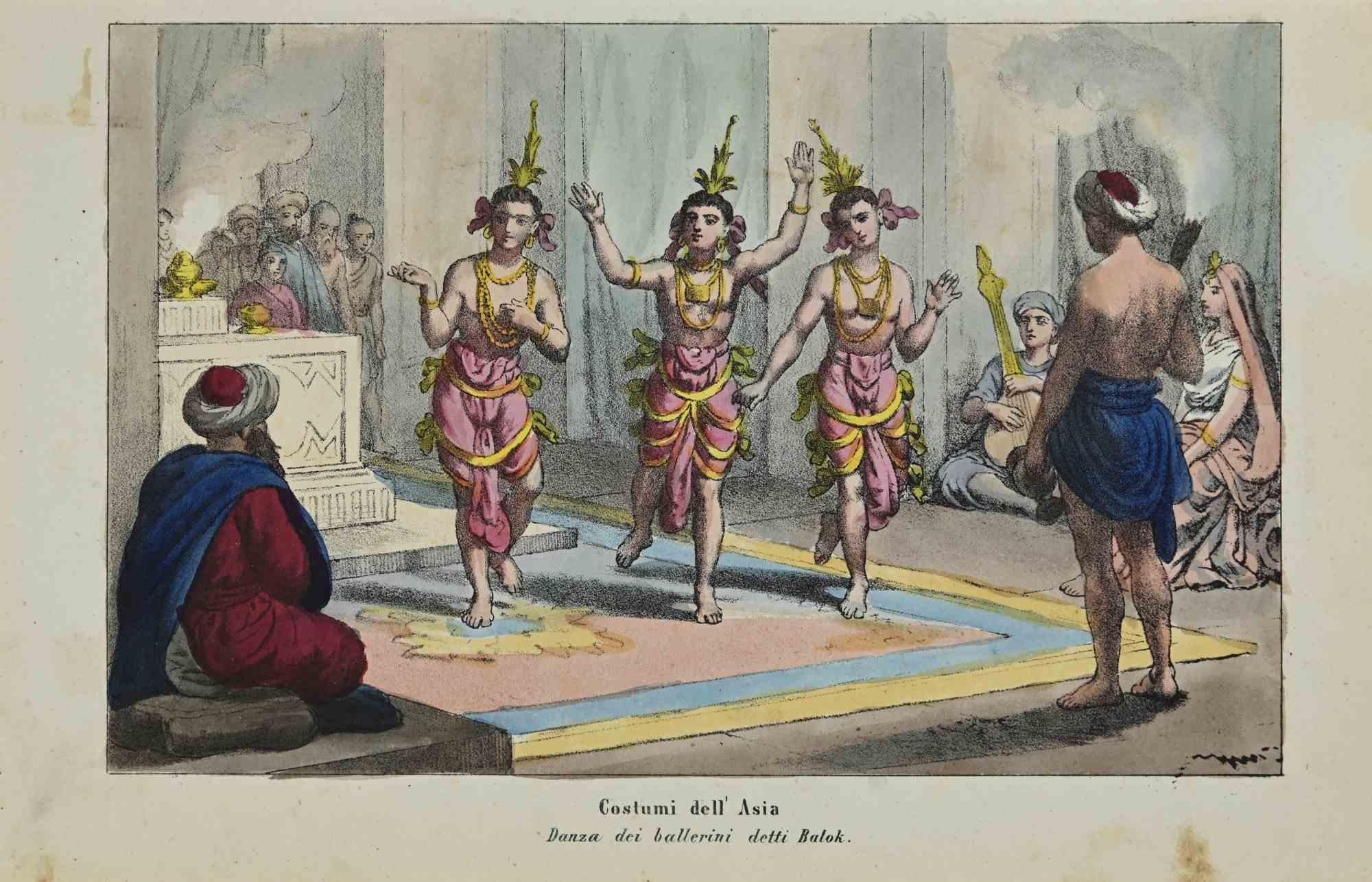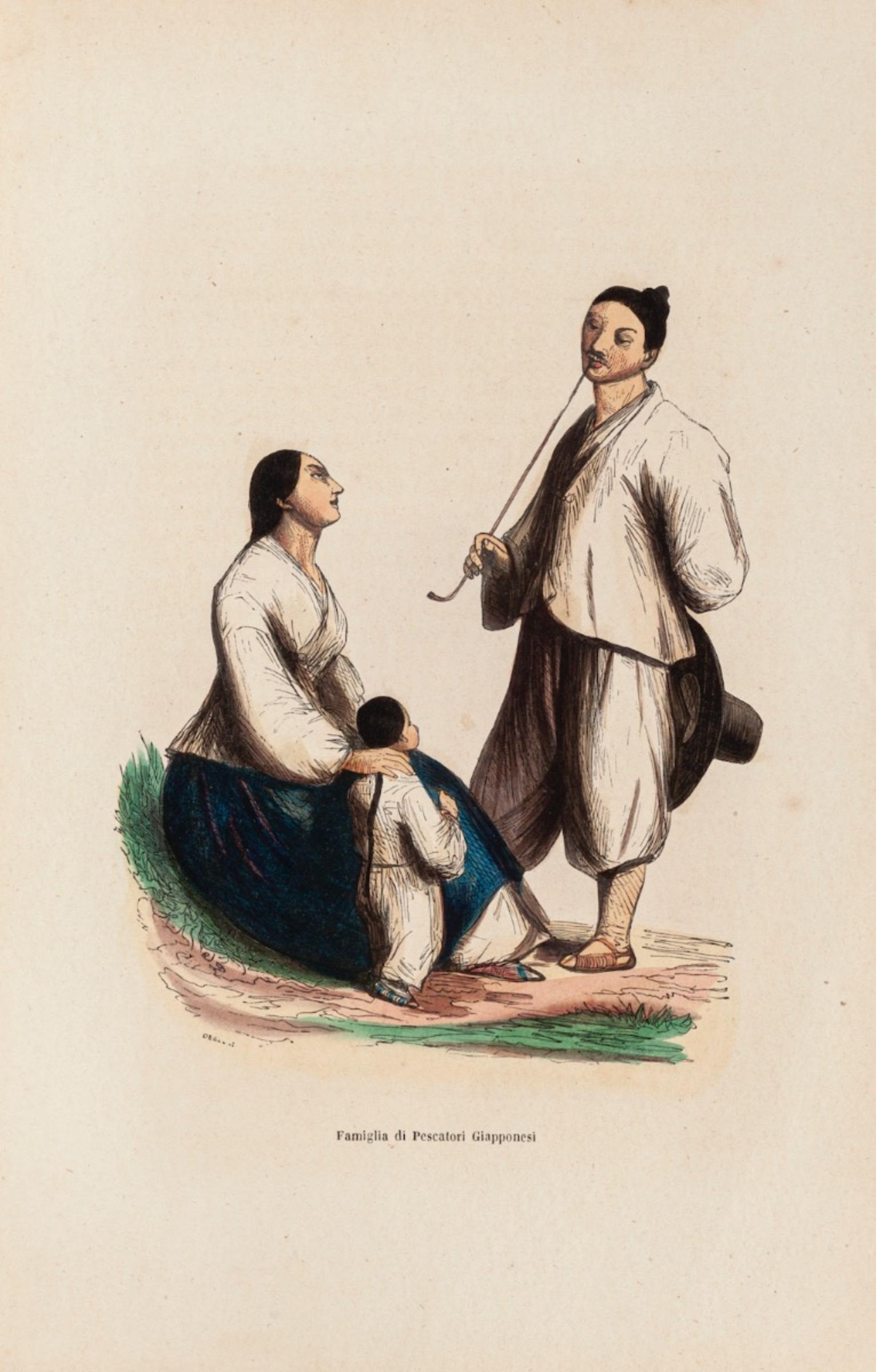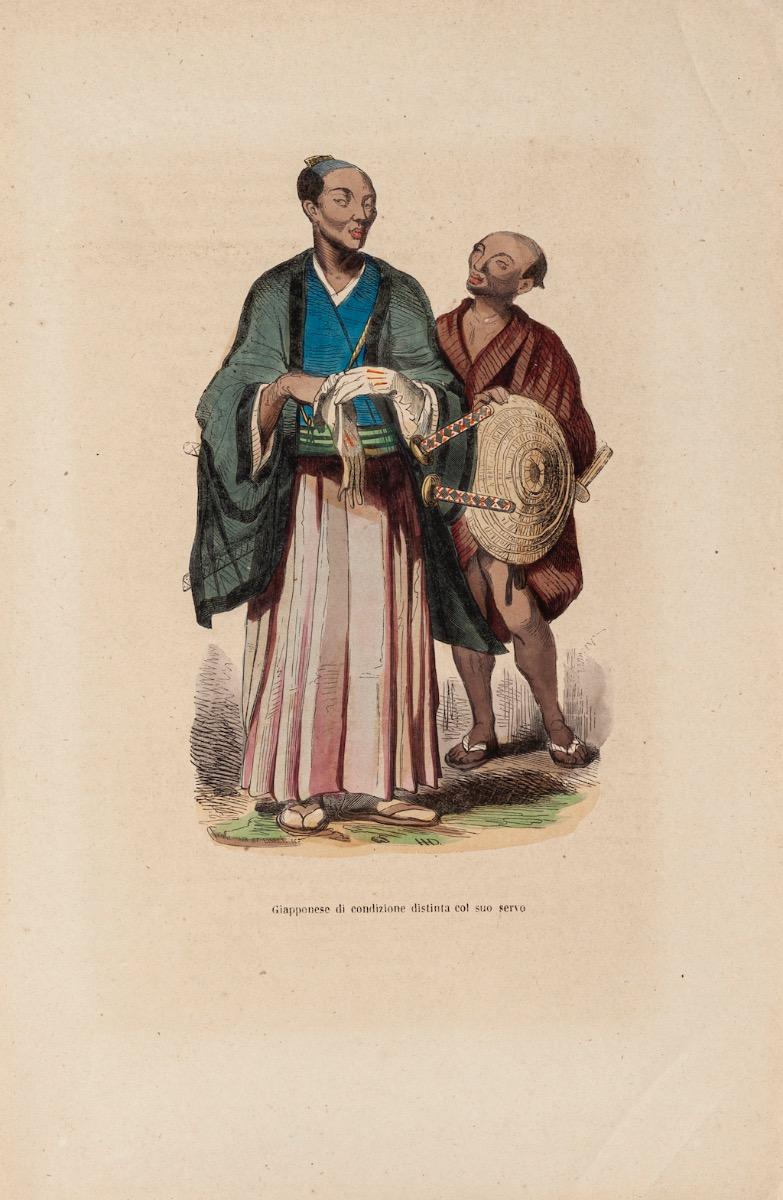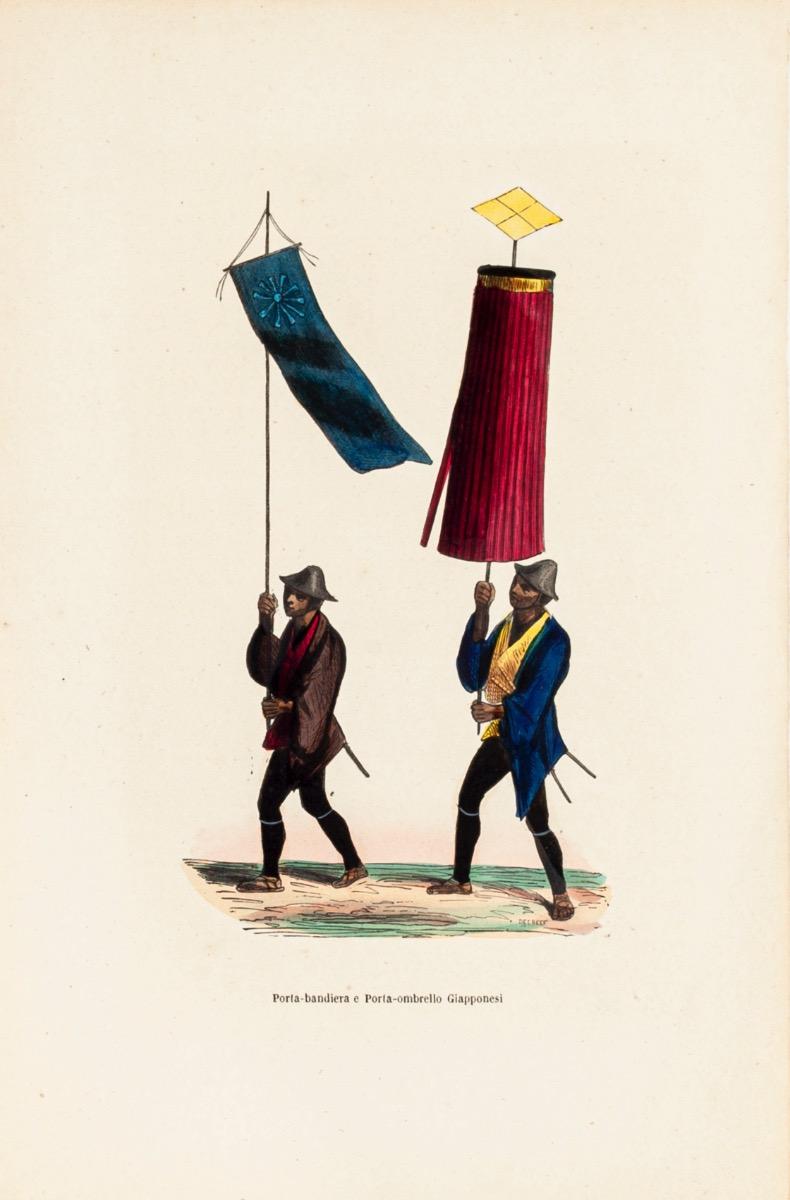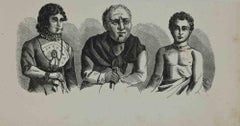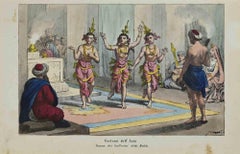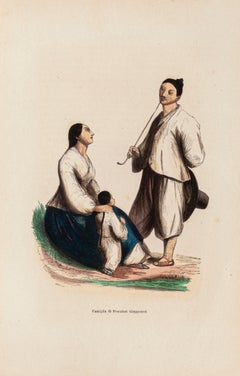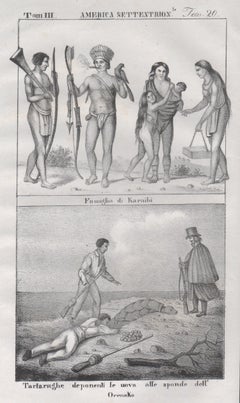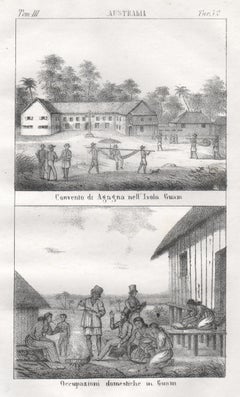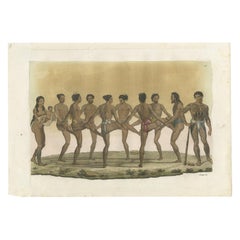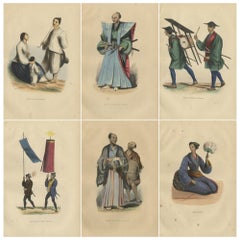Items Similar to Japanese Gymnastic Exercises- Costumes - Lithograph - 1862
Want more images or videos?
Request additional images or videos from the seller
1 of 2
UnknownJapanese Gymnastic Exercises- Costumes - Lithograph - 18621862
1862
$139
$213.8435% Off
£104.27
£160.4235% Off
€117
€18035% Off
CA$192.45
CA$296.0735% Off
A$209.16
A$321.7835% Off
CHF 112.09
CHF 172.4535% Off
MX$2,539.56
MX$3,907.0135% Off
NOK 1,407.22
NOK 2,164.9535% Off
SEK 1,304.98
SEK 2,007.6735% Off
DKK 891.32
DKK 1,371.2735% Off
About the Item
Japanese Gymnastic Exercises- Costumes is a Hand-colored lithograph on paper realized in 1862.
The artwork belongs to the Suite Uses and customs of all the peoples of the universe: " History of the government, of the laws, of the militia, of the religion of all the nations from the most remote times up to the present day".
Good conditions with slight foxing.
- Creation Year:1862
- Dimensions:Height: 5.52 in (14 cm)Width: 7.09 in (18 cm)Depth: 0.04 in (1 mm)
- Medium:
- Movement & Style:
- Period:
- Framing:Framing Options Available
- Condition:Insurance may be requested by customers as additional service, contact us for more information.
- Gallery Location:Roma, IT
- Reference Number:Seller: T-1457981stDibs: LU650313671512
About the Seller
4.9
Platinum Seller
Premium sellers with a 4.7+ rating and 24-hour response times
1stDibs seller since 2017
7,848 sales on 1stDibs
Typical response time: 1 hour
- ShippingRetrieving quote...Shipping from: Grasse, France
- Return Policy
More From This Seller
View AllJapanese Costumes - Lithograph - 1862
Located in Roma, IT
Japanese Costumes is a Hand-colored lithograph on paper realized in 1862.
The artwork belongs to the Suite Uses and customs of all the peoples of the universe: " History of the gov...
Category
1860s Modern Figurative Prints
Materials
Lithograph
$139 Sale Price
35% Off
Figures - Costumes - Lithograph - 1862
Located in Roma, IT
Figures - Costumes is a Hand-colored lithograph on paper realized in 1862.
Category
1860s Modern Figurative Prints
Materials
Lithograph
$115 Sale Price
35% Off
Balok Dancers - Lithograph - 1862
Located in Roma, IT
Customs -Balok Dancers is a Hand-colored lithograph on paper realized in 1862.
Titled on the lower.
The artwork belongs to the Suite Uses and customs of all the peoples of the univ...
Category
1860s Modern Figurative Prints
Materials
Lithograph
$169 Sale Price
35% Off
Japanese Customs - Original Lithograph - 19th Century
Located in Roma, IT
Japanese Customs is an original Hand-colored lithograph on creamy paper realized by an anonymous artist in the 19th Century.
Signed on the plate on the lower. Titled in Italian on t...
Category
19th Century Modern Figurative Prints
Materials
Paper, Lithograph
Japanese Customs - Original Lithograph - 19th Century
Located in Roma, IT
Japanese Custom is an original Hand-colored lithograph on creamy paper realized by an anonymous artist in the 19th Century.
Signed on the plate on the lower. Titled in Italian on th...
Category
19th Century Modern Figurative Prints
Materials
Paper, Lithograph
Japanese Customs - Original Lithograph - 19th Century
Located in Roma, IT
Japanese Custom is an original Hand-colored lithograph on creamy paper realized by an anonymous artist in the 19th Century.
Signed on plate on the lower right. Titled in Italian on ...
Category
19th Century Modern Figurative Prints
Materials
Paper, Lithograph
You May Also Like
Caribbean Indigenous People / Orinoco, America, mid 19th century lithograph.
Located in Melbourne, Victoria
'Famiglia di Karaibi' / 'Tartarnughe deponenti le uova alle sponde dell' Orenoko''
Italian lithograph, c1841. Originally from 'Galleria universale di tutti i popoli del mondo' by Gi...
Category
Mid-19th Century Naturalistic Figurative Prints
Materials
Lithograph
Guam, Convent and native inhabitants, mid 19th century lithograph. Oceania.
Located in Melbourne, Victoria
'Convento di agagna nell' Isola Guam. Occupazioni domestiche in Guam.'
Italian lithograph, c1841. Originally from 'Galleria universale di tutti i popoli del mondo' by Giuseppe Anton...
Category
Mid-19th Century Naturalistic Figurative Prints
Materials
Lithograph
Antique Print of Dancing Inhabitants of the Caroline Islands by Ferrario '1831'
Located in Langweer, NL
Original antique print of dancing inhabitants of the Caroline Islands. This print originates from 'Costume Antico e Moderno: Palestine, China, India, ...
Category
Antique Mid-19th Century Prints
Materials
Paper
$237 Sale Price
20% Off
Vibrant Handcolored Depictions of Japanese Costumes from 1844
Located in Langweer, NL
Vibrant Depictions of 19th Century Japanese Costumes from Auguste Wahlen’s Masterpiece
These prints depict various figures from Japanese society, ranging from a humble fisherman's family to a nobleman, a ceremonial samurai, and infantry musicians.
Each figure is intricately dressed in traditional attire, reflecting their status and roles.
The prints were created by the artist Auguste Wahlen as part of his celebrated work *"Moeurs, Usages et Costumes de tous les Peuples de Monde"* (Customs, Manners, and Dress of All the Peoples of the World), published in 1843.
The vibrant colors and fine detailing were achieved using lithography, a printmaking technique that involves drawing on a flat surface with a grease-based medium and using a chemical process to transfer the image. The accuracy of the costumes and lively scenes make these lithographs especially appealing. The contrast between the vivid costumes and soft shading adds depth, capturing the essence of Japanese life during this period.
Attraction of the Prints:
The appeal lies in their historic and ethnographic value, showcasing detailed attire and customs from another era, accompanied by the richness of the lithography technique. The vibrant colors, clean lines, and the representation of both nobility and common folk offer viewers a rich visual experience, portraying a distant culture with authenticity and grace.
Keywords:
19th-century prints, Japanese costume lithographs, traditional Japanese attire, Auguste Wahlen prints, "Moeurs, Usages et Costumes," ethnographic art, historic lithographs, ceremonial Japanese dress, Japanese fishermen prints, samurai art...
Category
Antique 1840s Prints
Materials
Paper
$532 Sale Price / set
20% Off
Ritual Dance: Expressions of Cultural Heritage in an African Ceremony, 1827
Located in Langweer, NL
The print is from "Il Costume Antico e Moderno" by Giulio Ferrario, specifically depicting the "Le Lullunge" feast in Senegambia. This festival is illustrated as part of the extensive series detailing the customs, costumes, and daily life of people from different parts of the world. The illustration captures a lively and culturally significant dance that forms part of the "Le Lullunge" celebrations, showcasing traditional attire and communal participation, which are central to the event in Senegambian culture. The illustration not only serves as a vibrant representation of the dance and celebration but also as an ethnographic record from the early 19th century, emphasizing the richness of Senegambian traditions.
The term "Senegambia" historically referred to a region in West Africa that encompassed parts of what are today known as Senegal and The Gambia. This area is known for its rich cultural heritage, including vibrant festivals and communal celebrations like the one depicted in the illustration. The "Le Lullunge" feast, as illustrated in Giulio Ferrario's "Il Costume Antico e Moderno," captures the traditional dances and social practices of the peoples in this West African region.
This original antique hand-colored print depicts a vibrant scene of Native African dance, possibly part of a ceremonial or ritualistic activity. The individuals are animatedly engaged in dance, with their limbs dynamically positioned, suggesting vigorous movement. Each figure is adorned with elaborate feathered headdresses and carries feathers or other items as part of their dance. These accessories likely have cultural significance, possibly denoting status, role in the ceremony, or spiritual symbolism.
The attire of the dancers is simple yet functional for their vigorous activity, consisting of skirts that allow for ease of movement. Their outfits are decorated with additional elements that may indicate tribal affiliation or personal achievement. The dancers are barefoot, connecting them physically and symbolically to the earth, which is a common aspect in many African cultural practices emphasizing a connection to nature.
The setting of the dance is outdoors, under a large tree, indicating the importance of natural surroundings for the event. This could be a communal gathering place, chosen for its significance within their community or for its natural beauty and tranquility.
Overall, this image captures a moment of cultural expression, highlighting the importance of dance in Native African traditions as a form of communication, celebration, or spiritual practice. The detail and color used in the depiction aim to convey the vibrancy and energy of the scene, reflecting the artist’s perspective on these cultural practices.
In more detail:
From: ‘Il Costume Antico e Moderno …, l’America.’ , by Giulio Ferrario, published in Milan in 21 volumes by Antonio Fortunato Stella in 1827 (first edition, second issue). The 17 volumes of the first issue were published sequentially between c. 1815/1816 until 1826 after first being issued in 143 weekly installments. The work appeared in Italian and French. Smaller size editions with smaller much less elaborate plates were published in Florence (1823-38), Naples (1831-42) and even a 16mo. editon in Livorno (1830). Original blindstamp at bottom right image. The sources used for this work are wide.
Made by ‘Gallo Gallina’ after ‘Giulio Ferrario’. Giulio Ferrario was founder of the ‘Societa Tipografica de Classici Italiani’ and served as the director of the Braidense National Library in Milan, Italy. Artists that worked on this monumental work are: Gallo Gallina, D.K. Bonatti, A. Biasioli, L. Rossi, Paolo Fumagalli, Gaetano Zancon (1771-1816), G. Bigatti, C. Bramati, G. Gallo, C. Bottiglia, G. Castellini, Antonio Rancati (1784-1816), Vittorio Raineri, Sydney Parkinson...
Category
Antique 1820s Prints
Materials
Paper
$237 Sale Price
20% Off
Funeral, Indigenous Peoples, Canada, North America, mid 19th century lithograph.
Located in Melbourne, Victoria
'Vettura di Candadesi' / 'Cerimonia per defunli degl' Indiani nel Canada'
Italian lithograph, c1841. Originally from 'Galleria universale di tutti i popoli del mondo' by Giuseppe An...
Category
Mid-19th Century Naturalistic Figurative Prints
Materials
Lithograph
More Ways To Browse
Antique Costume
Alex Katz Ada In Spain
Alphonse Mucha Sarah Bernhardt
Andre Brasilier Lithograph
Andy Warhol Signed Dollar Bill
Area Nightclub
Boris Kochno
Chagall Bird
Chagall Oiseau
Chanel No 5 Print
Chikanobu Woodblock Print
Cleo De Merode
Da Vinci Etching
Dali Flordali
Dali Signature
Dali Tarot
Dali Time And Space
Daphnis Et Chloe
